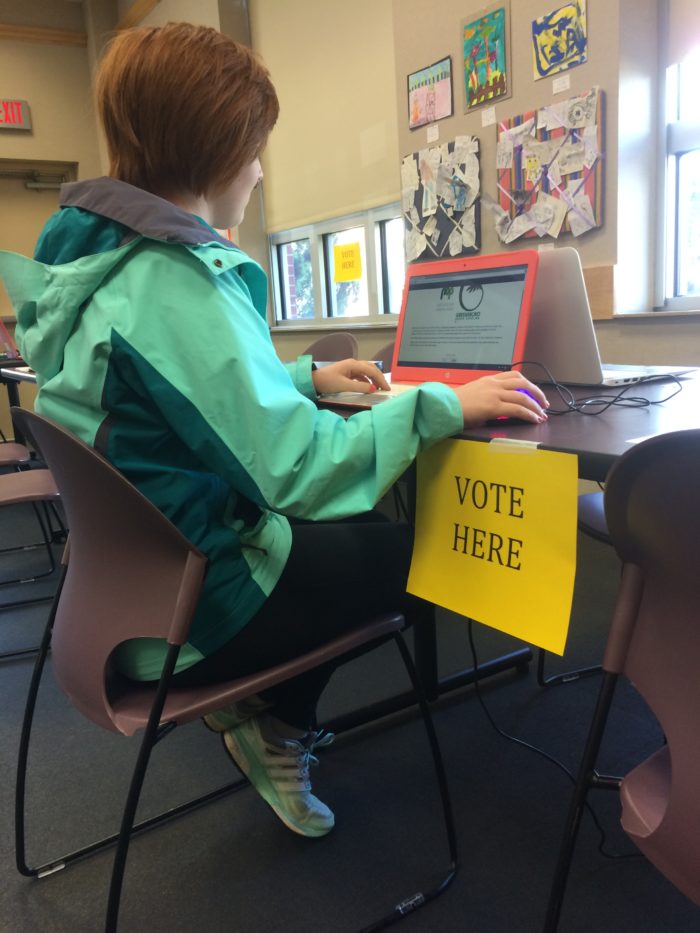
From Ranata Reeder, an update on the City of Greensboro first Participatory Budgeting process. See her first post.
In April, the last step in neighborhoods choosing particular spending priorities was conducted. Before I reveal the outcome of the vote, it is important to see the whole process of local government budget outreach.
In August 2015, the City of Greensboro embarked on its first Participatory Budgeting process. Not only was this a first for Greensboro, it is the first Participatory Budgeting process in the south. Greensboro officially made it to the PB map!
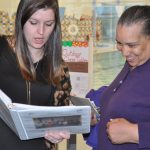
Greensboro residents proposed ideas, developed proposals, and voted on how to spend $100,000 in each of Greensboro’s five city council districts, totaling $500,000.
Beginning in October 2015 and ending in December 2015, Greensboro residents submitted ideas for improvements they wanted to see in their communities. 675 ideas were submitted!
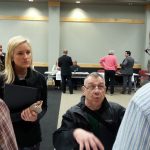
Volunteer budget delegates and facilitators worked with City of Greensboro staff from December 2015 – March 2016 to narrow the idea list of 675 to 50 projects proposals Greensboro could vote on across its five districts. Budget delegates worked and proposed projects within five categories: arts & culture, special projects, parks & recreation, safety & environment, and streets, sidewalks, & transportation. Projects costs ranged from $300 to $100,000.
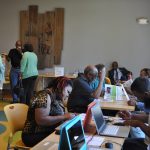
Over 1,100 Greensboro residents came out to vote over a two-week period in April. Residents age 14 and older were eligible to vote. These voters selected 30 winning projects, including a city-wide bus tracking mobile application, as improvements they wanted to see implemented. Top vote getters centered on:
- Street improvements,
- Park and recreation center updates, and
- Public art.
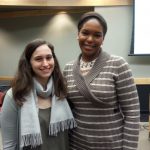
All winning projects were included in the city manager’s recommended budget. The Greensboro City Council will vote on the FY 2016-2017 budget in June 2016.
Greensboro’s Participatory Budgeting process has had great impacts on the community, and is shown to be equitable and inclusive.
I invite you to learn more about the early stages of the process and to view the many interesting parts of the overall project.
Ranata: I skimmed some of the news reports of the PB process in Greensboro. There were at least some questions raised about having residents younger than 18 voting on the projects. http://www.greensboro.com/opinion/n_and_r_editorials/our-money-our-voice/article_73135542-2d8e-5388-ab21-e6b209f90405.html Could you or a member of the Steering Committee reply about this? Do most PB processes in other cities allow for younger people to participate in all parts of the work, including voting on the final choices that go to the City Council?
Hi Dr. Stephens! That is a wonderful question. In PB processes in North America we typically see a voting age of 14, with some processes having a voting age of 16. There are also examples of cities with lower voting ages such as in Dieppe, Seattle, and Boston.
Thanks, Ranata. I see an interesting research project – comparing adult and youth impressions of the PB process, and how the youth (in particular) compare this form of “community involvement” to other things they have done. From a more practical standpoint, it would be good for PB Central to have this youth/young adults talk with each other and compare experiences – leading to tips for other locations to have effective youth outreach and involvement.
Great stuff, Ranata! I have a few questions:
1) Was the busing app which was one of the winning projects already in existence, or will it now be built? And if it’s going to be built, will it be done in-house or with an outside developer?
2) Were any online tools used within the PB meetings to facilitate discussion, education, and/or voting?
3) What sort of strategies did you guys use to get people to PB meetings? Did you see increases in turnout compared to normal city meetings and outreach initiatives?
Hi Kevin! Let me know if I answered all your questions!
1) The mobile busing application was not already in existence. It is a new project that will be implemented through the city’s standard procurement processes.
2) The main online tool we used during this process was http://www.ideasgreensboro.org. Here, residents could submit ideas, talk to one another, support ideas, and have a visual of how the ideas mapped out across the city. We used both paper and digital ballots for voting.
3) We used a variety of strategies to get people to PB meetings, including: face to face, pop up meetings, press releases, media advisories, canvassing, attending community meeting, news, local media, social media, listservs, and door knocking.
4) How does PB compare to budget meetings?
a. Budget Meeting Attendance
i. 2012 – 114
ii. 2013 – 80
iii. 2014 – 69
iv. 2015 – 30
v. 2016 – 5
b. Participatory Budgeting Attendance
i. Idea Collection – 1,098
ii. Community Expos – 225
iii. Voting – Over 1,100
iv. Trained Volunteers – Over 100
Perfect, thanks Ranata. Those attendance numbers are particularly inspiring!
Great to see so many transportation and connectivity projects. In future PB processes, how likely is Greensboro to fund programming (after school programs, youth summer camps, adult education) in addition to capital projects?
Hi Andrew! Yes, the majority of the winning projects centered around Streets, Sidewalks, and Transportation. Conversations about PB in Greensboro have only focused on capital funds. This tends to be a trend in North America. In other countries, in Brazil for instance, where PB extends to programmatic funds we see deeper impacts. The local research team (Spoma & Vincent) has been collecting data on what type of funds and projects people would like to use PB for in Greensboro. From that perspective, there is a desire to use PB for programmatic purposes.
It’s easy to dismiss the importance of an engagement like participatory budgeting if you focus only on the raw numbers (although it does beat the pathetically low participation rate in the traditional budget process by an order of magnitude). But I think it’s also important to underscore the radically different quality of engagement. I had the opportunity to chat with some of the volunteers and City staff at one of the Greensboro events and the level of energy was striking. People were *excited* about the budget process. They were learning enormous amounts about the true complexity of funding public projects and, frankly, offering a lot of their personal time in order to serve as budget delegates. I’d wager that one of the distinctive features of this kind of process is the likelihood that it produces new community leaders.
Eric – good thoughts. I want to pick up on just one part: “I’d wager that one of the distinctive features of this kind of process is the likelihood that it produces new community leaders.”
I hope that the researchers, (Spoma & Vincent) or others, might do some tracking on this. Or maybe PB HQ has looked at to what degree PB involvement builds other kinds of intra-neighborhood connections and projects, or people “rising up” to leadership in neighborhood, nonprofit, church or government-tied organizations.
Hi Eric!
You’re absolutely right. Participatory Budgeting isn’t solely about engagement numbers, it’s about outcomes. Outcomes that we see in PB process globally are community building, transparency, development of new leaders, and more resources to low income and marginalized communities.